Stretching for cyclists: Why, how often, and which are best?
The science behind why, and a selection of key stretches for cyclists
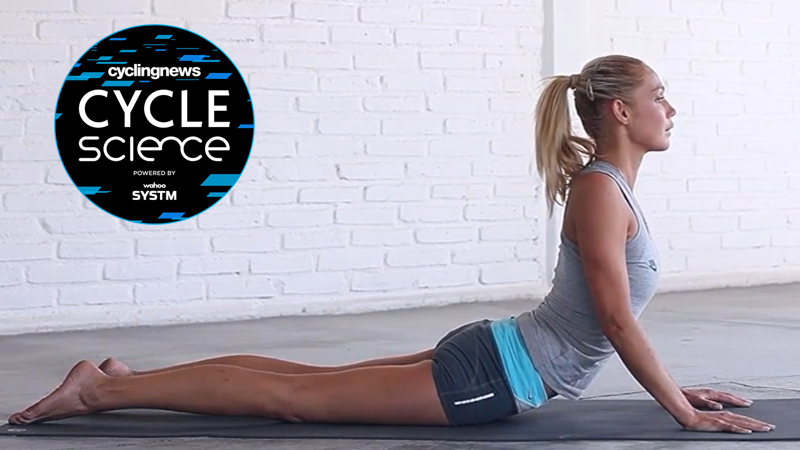
Cyclists can spend a large amount of time in a relatively fixed position, which can cause a number of issues including the shortening of muscles, increases in stiffness/soreness and could even lead to a reduction in power production from muscle groups.
The amount of time we generally spend in a fixed position on the bike is often compounded by spending a large sum of our work hours seated at a desk. The easiest way to combat these large portions of inactivity is to include a stretching regime post-ride/exercise.
Areas that we often find are impacted by the static nature of our position on the bike and desk work jobs include the neck, lower back, hips, and IT band.
Why should cyclists stretch?
Cycling includes repetitive actions which are performed through a limited range of motion. It’s no surprise then that this coupled with the static nature of our position on the bike can create an imbalance within the musculature which leads to excessive tension being applied through some joints.
This excess tension applied through joints combined with musculature imbalances and poor flexibility can lead to postural issues going forward as well as leaving you more prone to injury and limiting your ability to adopt a comfortable position on the bike.
These factors can lead to a reduction in performance, especially for those who are into their time-trialling and sprint cycling. We require a good range of motion in order to adopt an aerodynamic position on the bike as well as to perform off the bike strength exercises such as a squat.
Stretching yields flexibility, which translates to a greater range of motion around joints and further freedom of movement. Having increased levels of flexibility results in more pliability of tissue within the system and in general a more healthy muscular and skeletal system.
Get The Leadout Newsletter
The latest race content, interviews, features, reviews and expert buying guides, direct to your inbox!
How often and when should we stretch?
When: Generally the best time to stretch is directly after exercise when the muscles are warm, however, we can include some stretching in a warm-up routine to prepare you for the session to come.
What type: You want to include static stretches at the end of your sessions when the muscles are warm. If you include stretching in your warm up routine, you need to ensure that these are dynamic in nature, as static stretching of “cold” muscles can lead to reduced power output for up to an hour.
How often: We should aim to include flexibility training (stretching) into our training regime a minimum of 2 to 3 times per week.
How long: Initially you should aim to hold each stretch for at least 30 seconds, thereafter you can increase the stretch time to 60 seconds. This allows for the stretch response to take place where the muscle 'relaxes' and the improvements in flexibility are found.
Additional info: It is important to stretch the muscles to mild discomfort. We want to stretch past our normal range of motion while avoiding any pain sensations during the stretch. Each stretch should also be performed two to four times on average.
Which stretches should we do?
While it seems obvious that we should stretch around the joints that are mostly affected by cycling (hip, knee, ankle) we should not neglect the joints and ranges of motion that we do not utilise. Our aim should be to return to a 'normal' range of motion.
The common areas of concern that we need to address include the quadriceps, hip flexors, hamstrings, lower back and the upper back/chest muscles.
Some of the stretches that you should incorporate into your stretching regime include:
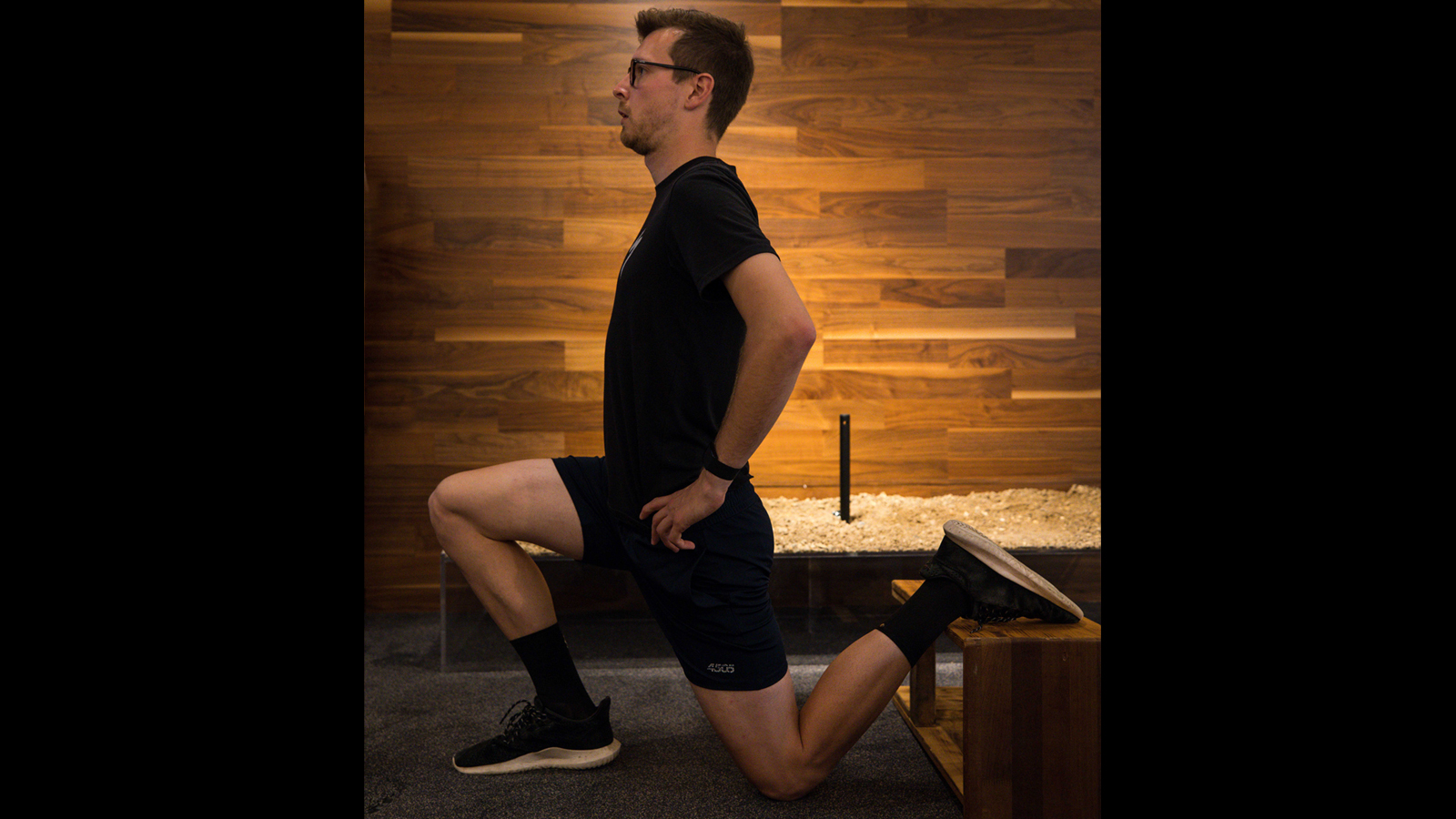
Quad stretch (Couch Stretch):
This stretch targets the quads as well as the hip flexor muscles.
- Place one leg on an elevated platform (couch/chair/bench) and the knee on the floor
- The opposing knee it positioned in front of you in a kneeling position
- Push the hips forward slightly while leaning the torso slightly backwards
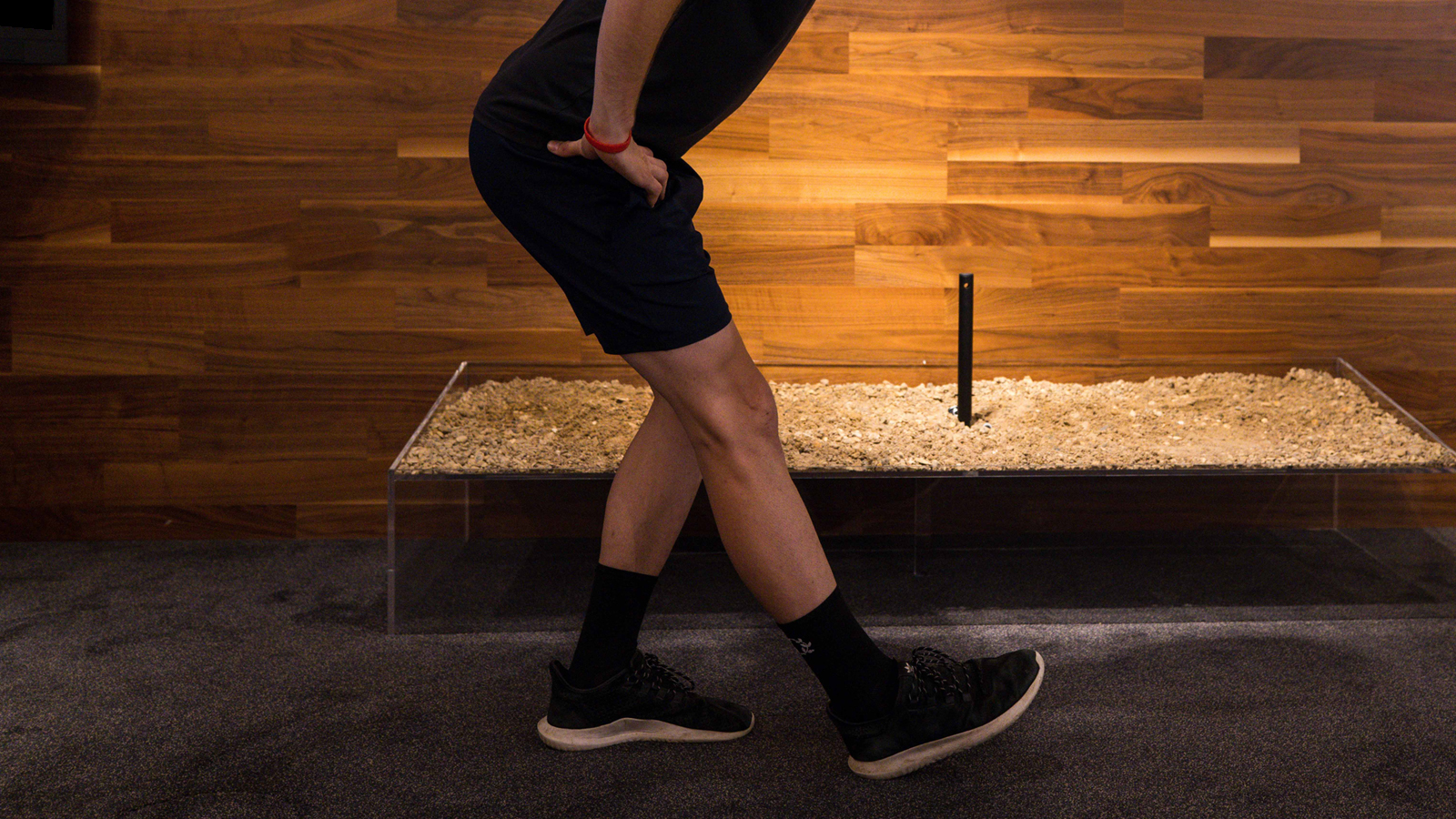
Hamstring stretch:
This targets the hamstrings at the rear of the upper leg.
- Kneel down, then begin to extend the front leg
- Sit back towards your heel and the floor and slowly straighten the front knee
- Aim to keep your chest upright and push it slightly forward to increase the stretch
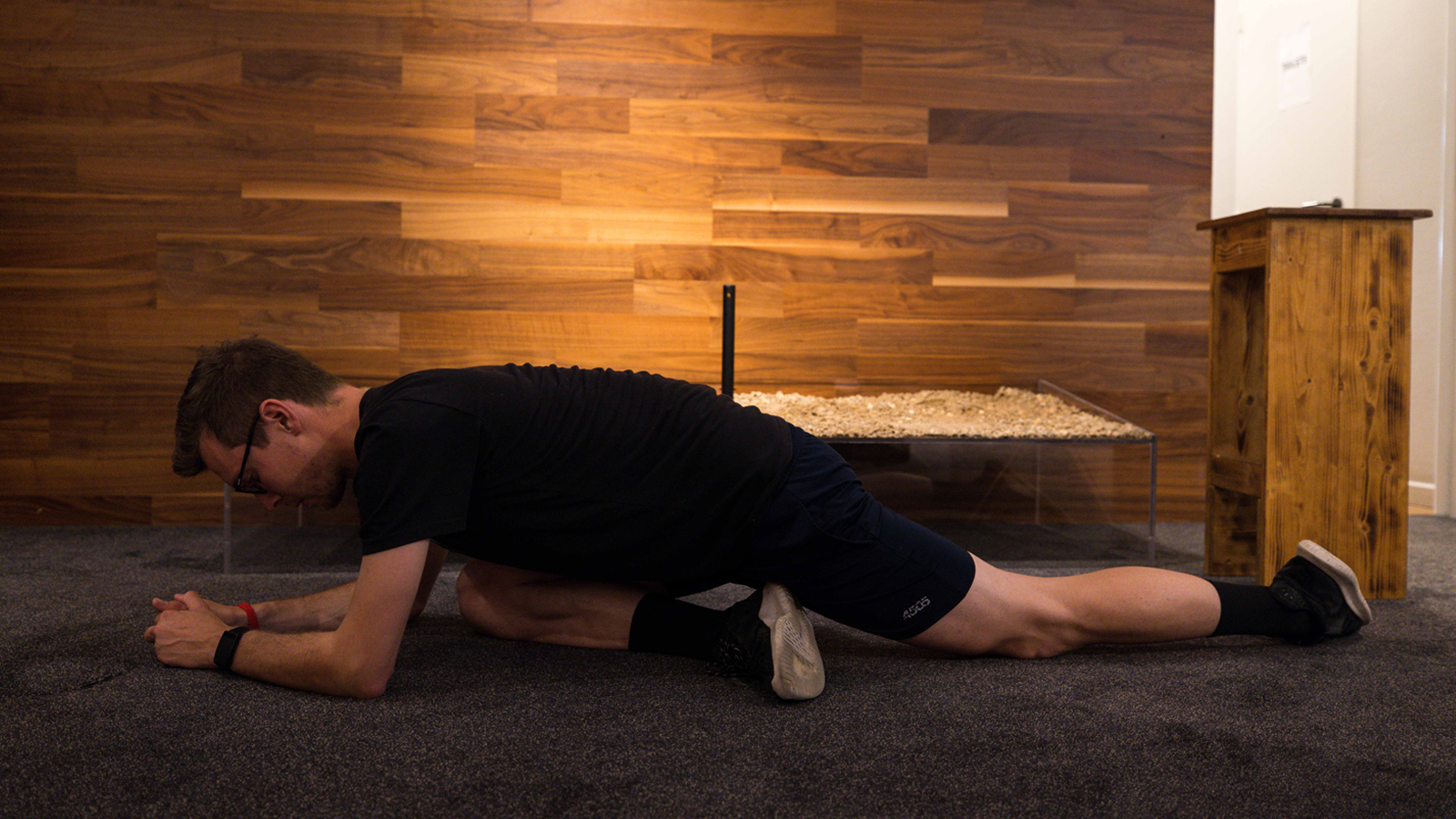
Glute stretch (Pigeon Pose):
This targets the TFL (tensor fasciae latae), hip flexors and glutes.
- Kneel on the floor with your arms out in front of you in a tabletop pose
- Cross one leg in front of you so that the foot is just in front of the opposite knee
- Sit back towards the floor, slowly increasing the stretch around the outside of the front hip/glutes
- Progress by holding your torso upright with your hands
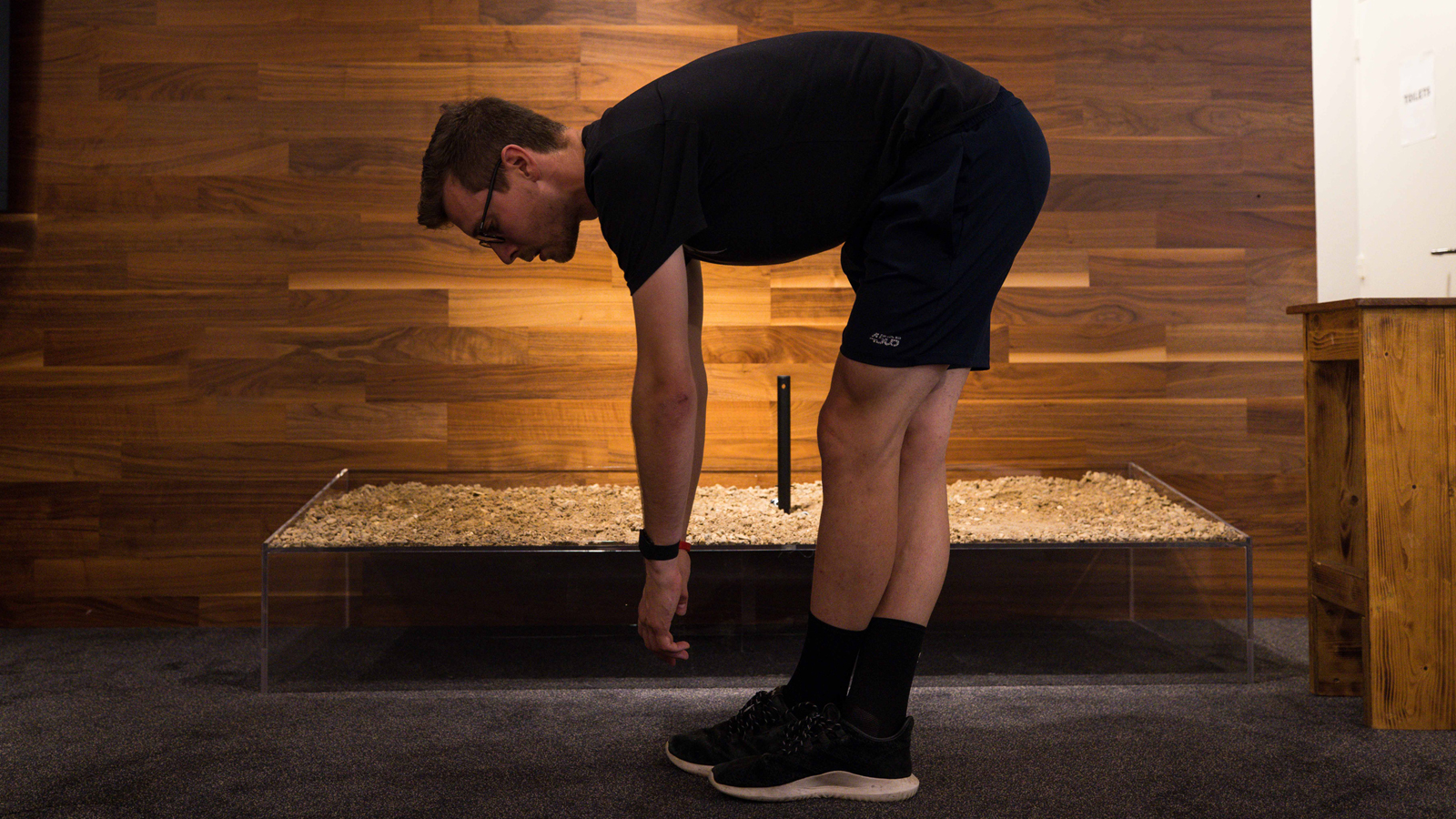
Iliotibial Band (ITB) stretch:
The ITB is not a muscle, but stretching the muscles around, such as the TFL(tensor fasciae latae) and quadriceps will alleviate the feeling of tightness in this area. This targets the
- In a standing position, cross your left leg in front of your right. Try to get your toes parallel
- Gently bend over as if touching your toes. Feel the stretch down the back and on the outside of your legs
- Gently come back into standing by looking at your belly button as you come all the way back up
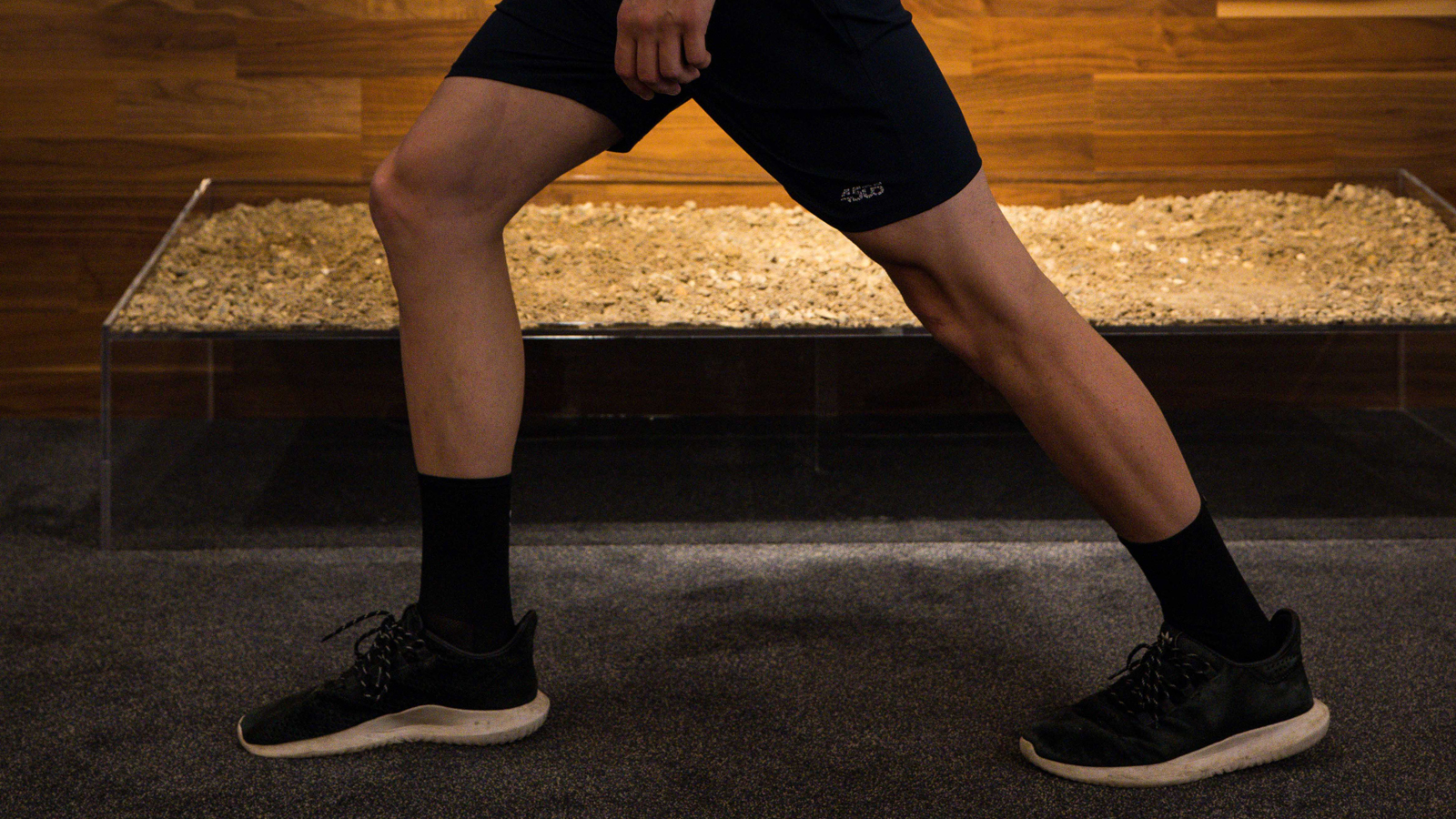
Gastroc/Soleus (Calf) stretch:
This targets the Gastrocnemius and Soleus at the rear of the lower leg.
- Stand with one foot slightly in front of the other
- Gently bend the front leg while straightening the back leg
- Slowly slide the back leg further back in order to increase the stretch
- Progress by leaning into a wall to add load to the stretch
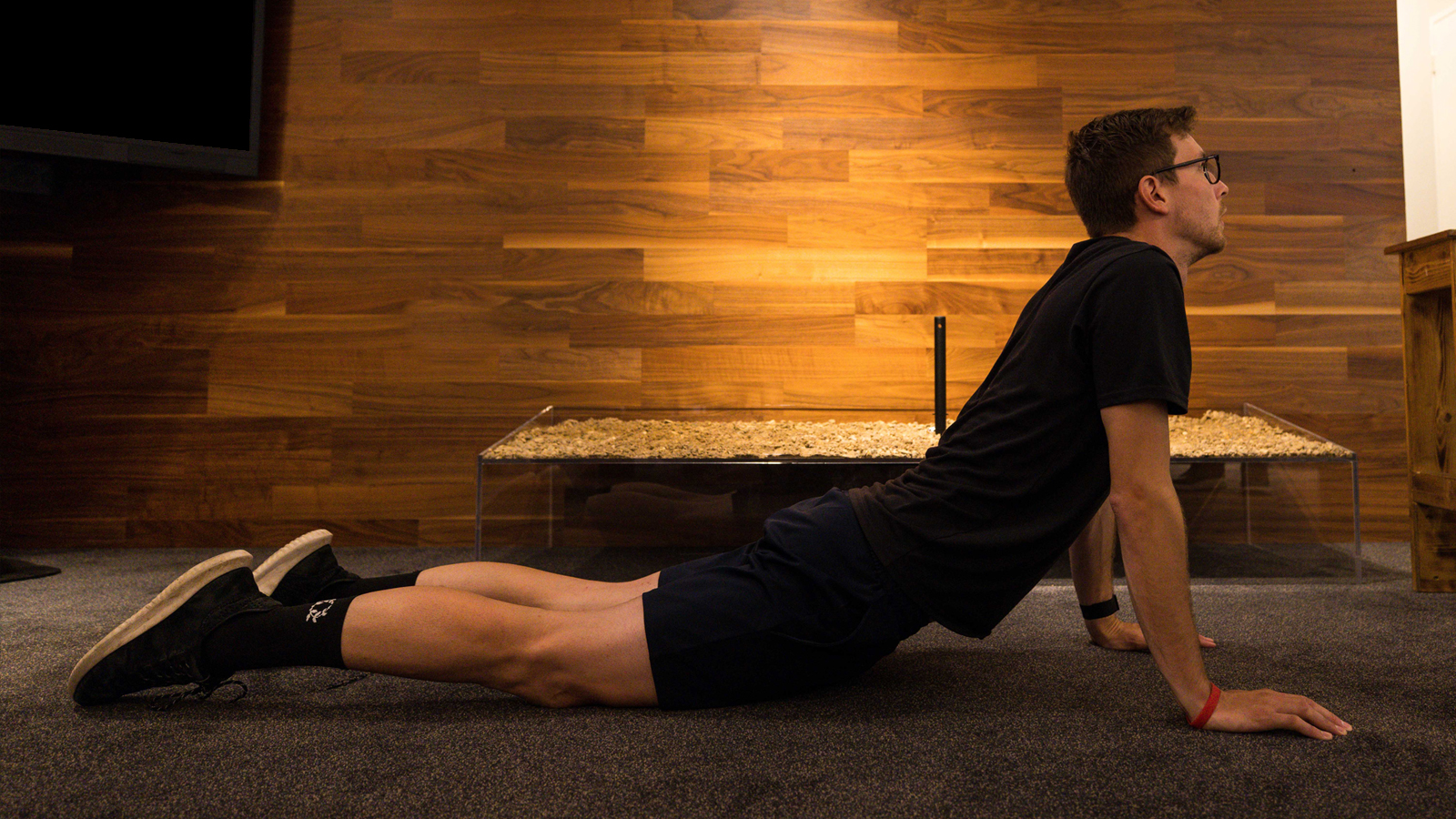
Lumbar mobilization stretch:
This stretches various muscles in the lower back and upper chest.
- Lie down on the floor face down, placing your palms flat on the floor beside your ribs
- Press firmly into the ground straightening your arms while lifting your hips, torso and the top of your thighs
- Lower back down slowly
Jarred Salzwedel completed his Honours degree in Sports Science at the Nelson Mandela Metropolitan University in 2013. His Master's degree focused on investigating training adaptations to differing high-intensity interval training programmes in cyclists.
He has raced both on the road and track at a National level in the Junior ranks which led to his interest in the science behind training and conditioning, as well as his passion to help athletes optimise their performance.
Jarred owns and manages Cycle Dynamic Coaching - a coaching platform that looks after and advises some of South Africa’s top Road and Track cyclists. He has extensive knowledge in exercise physiology having previously focused on the physiological testing of endurance athletes.

